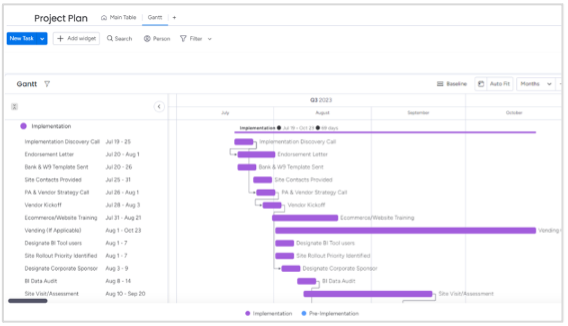Introduction
Embarking on the journey to implement and adopt an MRO program across your organization requires strong project management by Procure Analytics, and a close three-way partnership between the PA, the member organization, and the supplier.
In this blog post, we will delve into the critical factors required to ensure seamless integration of an MRO program.
Define Clear Objectives & Timelines
First and foremost, we define clear project objectives and timelines in collaboration with the supplier and the corporate sponsor. Each project is unique, but some areas of focus include the following topics:
- How many facilities to be integrated into the program, and where are they located?
- Are Vendor Managed Inventory (VMI) systems a part of the implementation?
- Is ERP integration required?
- How much is each facility spending and with what suppliers?
- Where are the biggest opportunities for savings?

After we understand the member’s objectives and required project milestones, we outline each step in a plan in Monday.com. This detailed plan is a living, shared document between us and the member to track progress and ensure alignment, and it is a critical first step in a successful implementation process.
Build Corporate Support.
Second, we rely on strong corporate support and endorsement to ensure access to local facilities and identify local site champions. The Procure Analytics’ implementation team assists the corporate sponsor with messaging the program benefits and impact on total cost of ownership to the local facility leaders, including on-site visits to build relationships, walk the facility, and assess inventory and tool crib requirements.
The local leaders have an opportunity to share information unique to their facility, give guidance on their specific project objectives, or flag potential challenges to adoption. This stakeholder engagement and input is crucial to long-term program success across an organization.

Gain Spend Visibility.
Finally, data-sharing and visibility into current spend are the third necessary ingredients for program success. The spend details are necessary to identify areas for improvement in total cost of ownership – SKU consolidation, supplier consolidation, private label switching, over-stocking of inventory, reduced use, etc – and equally important for setting a baseline to measure impact over time. If the current spend status is not transparent, it is impossible to track progress and improvements. PA’s data and analytics suite tracks key performance indicators, including total savings, consolidation results and supplier performance.
Conclusion
Successfully implementing an MRO program requires a detailed plan with good communication and engagement from all stakeholders: corporate sponsor, supplier, PA, and local leaders. By focusing on clear objectives and utilizing technology to track the project and report on performance, we help our members navigate the complexities of MRO program implementation and achieve long-term adoption that drives spend towards preferred suppliers.
- CATEGORIES
- MRO

